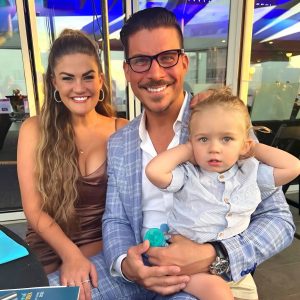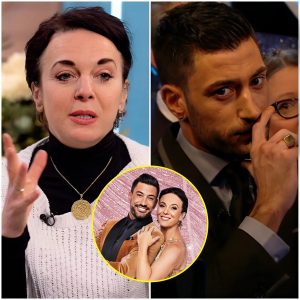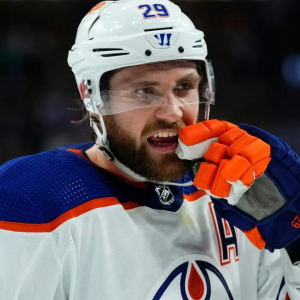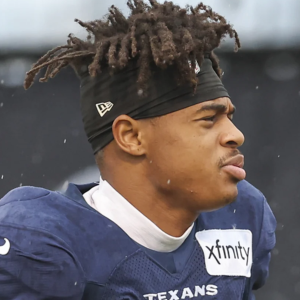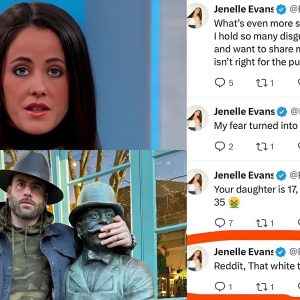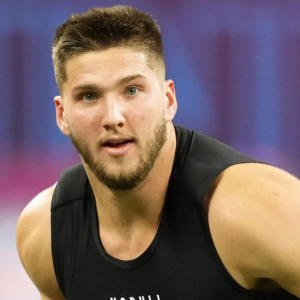Quinn Hughes cemented himself as one of the National Hockey League’s elite defencemen this past season when he took home the first Norris Trophy in Vancouver Canucks franchise history. He won the award by a significant margin, and for good reason.
In his first year as Canucks captain, Hughes finished first in assists and points and kept up an incredibly high level of play all season long while appearing in all 82 games for the first time in his career.
It was a phenomenal year for Hughes, and Filip Hronek is certainly a part of that story. Acquired by the Canucks ahead of the 2023 NHL Trade Deadline, Hronek didn’t play much down the final stretch of that season while nursing a shoulder injury. This season though, Hronek played in all but one game, and enjoyed a career year while manning the top pairing alongside the Canucks’ captain.
Is Quinn Hughes or J.T. Miller the Canucks’ MVP this season?
As expected, Hronek was quite clearly the Canucks’ second-best defenceman, especially in the first half of the season, when he was on a point-producing tear alongside Hughes. Hronek finished his first full season as a Canuck with five goals and 43 assists, which would be the highest point total of any Canucks defenceman since Alex Edler in 2011-12 if Quinn Hughes didn’t exist.
But thankfully for Hronek (and Canucks fans), Quinn Hughes certainly exists, and the two formed one of the most dominant pairings we’ve ever seen in Vancouver.
But what if the Canucks want to split the pairing up?
The reason for splitting Hughes-Hronek
For a good chunk of the season and for the majority of the playoffs, the Hughes-Hronek pairing didn’t actually serve as the Canucks’ “top pairing.” Rather, the duo went out to create offence against the opposition’s second and third lines while the Carson Soucy-Tyler Myers pairing handled the task of shutting down top lines.
The club re-signed Myers this past offseason on a three-year contract, and there’s every reason to believe that he and Soucy can play at least at or near the level they did this past season. While Hughes-Hronek was indisputably the Canucks’ best pairing, the Soucy-Myers pairing was a clear second, especially in the playoffs when the games mattered the most.
What that pairing did well, however, was defend. Unfortunately for the Canucks, the drop off in offence when Hughes-Hronek weren’t on the ice together was staggering. What that suggests is that the Canucks might be best suited splitting up their two best defencemen, and that theory becomes even easier to argue for when you consider what’s changed about the Canucks’ defence corps since the playoffs ended.
CANUCKS 2023-24 PLAYOFF BLUELINE:
Hughes-Hronek
Soucy-Myers
Cole-Zadorov
Juulsen
The most notable departure from the Canucks’ blue line is Nikita Zadorov. The imposing Russian had a phenomenal playoff run, and played at a level far higher than the third pairing defenceman the Canucks were able to use him as. In his place comes Vincent Desharnais, who the Canucks believe they can get more out of. To this point in his career, Desharnais has been a defence-first defenceman with a noticeable lack of puck moving ability. More on him later.
CANUCKS PROJECTED 2024-25 BLUELINE:
Hughes-Hronek
Soucy-Myers
Forbort-Desharnais
While the Canucks’ defence looks to have taken a step back on paper, how much better and well-rounded would it be if they were able to have their two best defencemen each run their own pairing?
Tampa Bay won a cup with Zach Bogosian in their top four, and that was due to their best defencemen each running their own pairing, and they’re certainly not the first team to do go this route. Is this a formula the Canucks can follow?
Hughes with and without Hronek
To answer the golden question, we obviously must analyze what the data tells us about Hughes and Hronek’s level of play when they are together and when they’re apart.
As we’ve already established, these two were spectacular together this past season. They ranked within the top ten of the league in just about every advanced stat you can find when analyzing NHL defence pairings. They created offence and suppressed the opposition’s attack at an exceptional rate when together, in over 1000 minutes of 5v5 ice time.
Hughes logged just over 350 minutes of 5v5 ice time away from Hronek, and while the sample size is obviously limited, Hughes’s chance and goal suppression numbers improved in his time away from Hronek. This has a lot do with the types of situations Hughes was being put out with somebody other than Hronek — such as late in games when the Canucks needed a goal and wanted to keep Hronek fresh for the minutes Hughes needed to rest — but the numbers are interesting, nonetheless.
For Hronek, it’s another limited sample size that it’s hard to draw hard conclusions from, but it is… let’s use the word interesting again — to note that all of Hronek’s numbers were worse in the similarly small sample size away from Hughes.
Ultimately, the Canucks simply don’t know if splitting up Hughes and Hronek is a viable option just yet. The club seems to believe internally that he’s more than capable of doing it — Allvin was asked about following the eight-year extension he signed Hronek to this offseason — but he’s still yet to do it.
To find out if he can do it, they’ll likely need to split Hughes and Hronek during the preseason and if we’re being realistic, into the regular season too.
Having two pairings capable of controlling play would give the Canucks an advantage over plenty of teams around the league, as would having a Norris Trophy winner and a 40+ point defenceman on the same pairing. Splitting the two up would give the Canucks a more well-rounded defence group and would make them a harder team for opposing teams to gameplan for.
Okay, so who plays with who?
“Together, those guys, especially in the first half and parts of the second half, they were excellent,” Tocchet began when asked about the Hughes-Hronek pair and the possibility of challenging Hronek to drive his own pair this upcoming season. “The possession time, the analytics offensively, they were great.”
“Saying that, does Fil tend to defer too much? I think he does,” Tocchet continued. “We had that talk at the end of the year, so it’s not something he’s shocked by. He knows he defers too much and I’d like to see him be more forceful with his decisions.
[cont’d]
“The thing with Huggy too is that he can play with a lot of different guys. With a bigger defenseman that can sling him the puck, and play a smart game, that’s a luxury too if that could happen, and then Filip could drive his own pair. That’s something we have to look at as an organization.”
Dare we call this quote… interesting? Whatever you want to call it, it certainly seems like it’s on the organization’s radar to execute the theory we’re breaking down today.
So if the organization does explore splitting up their top pair, who plays with who?
For Hughes, it seems likely that Vincent Desharnais would have the inside track to play with Hughes. I spoke to OilersNation.com’s managing editor baggedmilk to get further insight on the type of player Desharnais is, and what kind of partner he excelled with during his Oilers tenure.
“Desharnais does an excellent job of using his size to break up the cycle and defend down low. He’s got a knack for eliminating time and space below the goal line and fishing pucks out of the pile to regain possession. That said, he needs a partner who can make a clean breakout pass because Vinny is not that guy. In Edmonton, he worked best with a well-rounded partner like Brett Kulak. Kulak has strong wheels and a decent first pass, which covered up a lot of Vinny’s puck-handling deficiencies.”
That certainly sounds like the type of player who could play with Hughes.
That being said, for Desharnais-Hughes to work, they need Hronek to work out just as well with whoever he’s playing with. That one seems like a no-brainer to be Carson Soucy.
If Soucy-Hronek can manage to play against top competition the way Soucy-Myers did, while hopefully contributing a bit more offensively, it leaves the door wide open for Hughes and Desharnais to play against some softer competition. Could Tyler Myers be the option to play with Hughes? Maybe, but we’ve seen that before, and the results have been mixed.
If it Hughes and Desharnais, it will be an intriguing experiment to see put it into action, given Desharnais’s inability to play higher up in the lineup in previous seasons.
As you’re seeing, there are a lot of “ifs” when it comes to splitting up Quinn Hughes and Filip Hronek. But the GM sounds like he wants to see it happen, and the head coach certainly doesn’t seem opposed, either.
